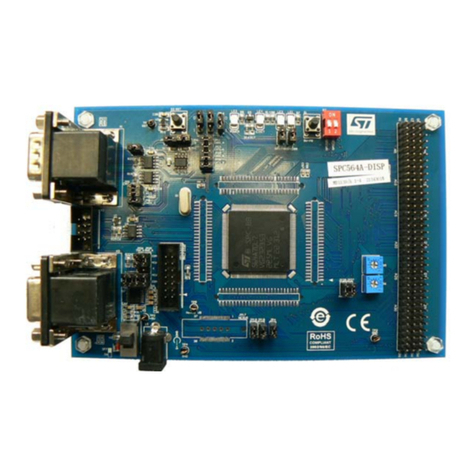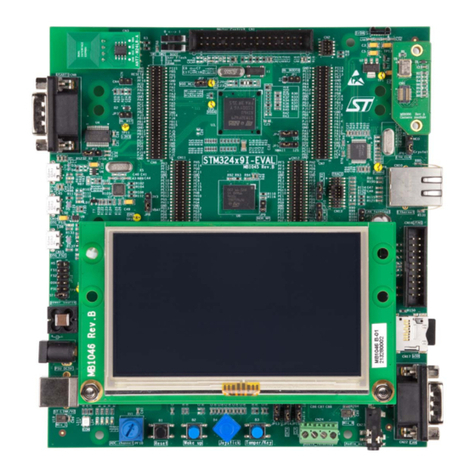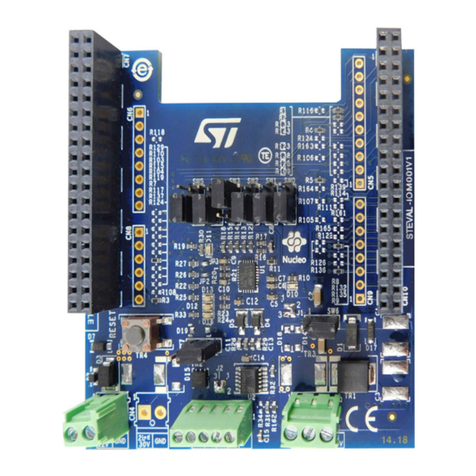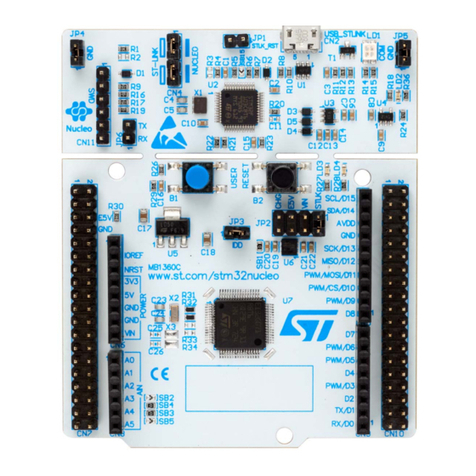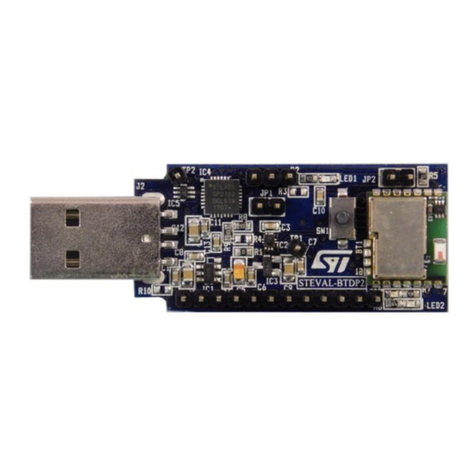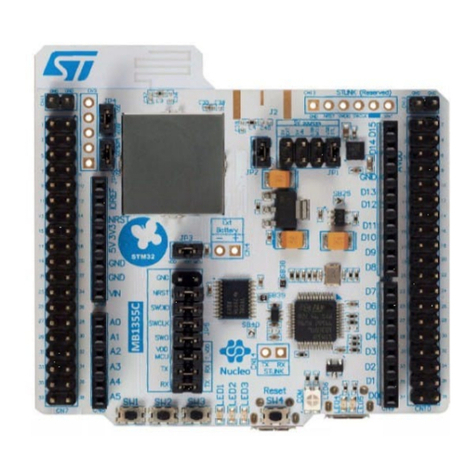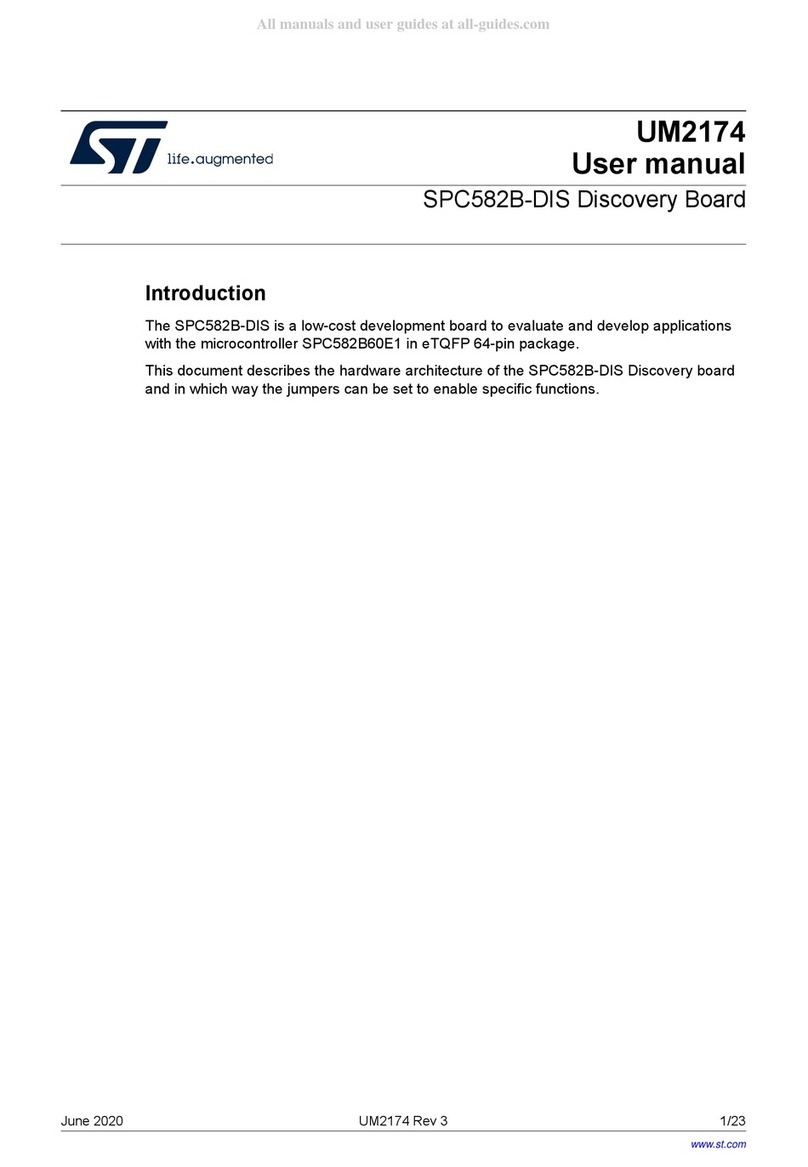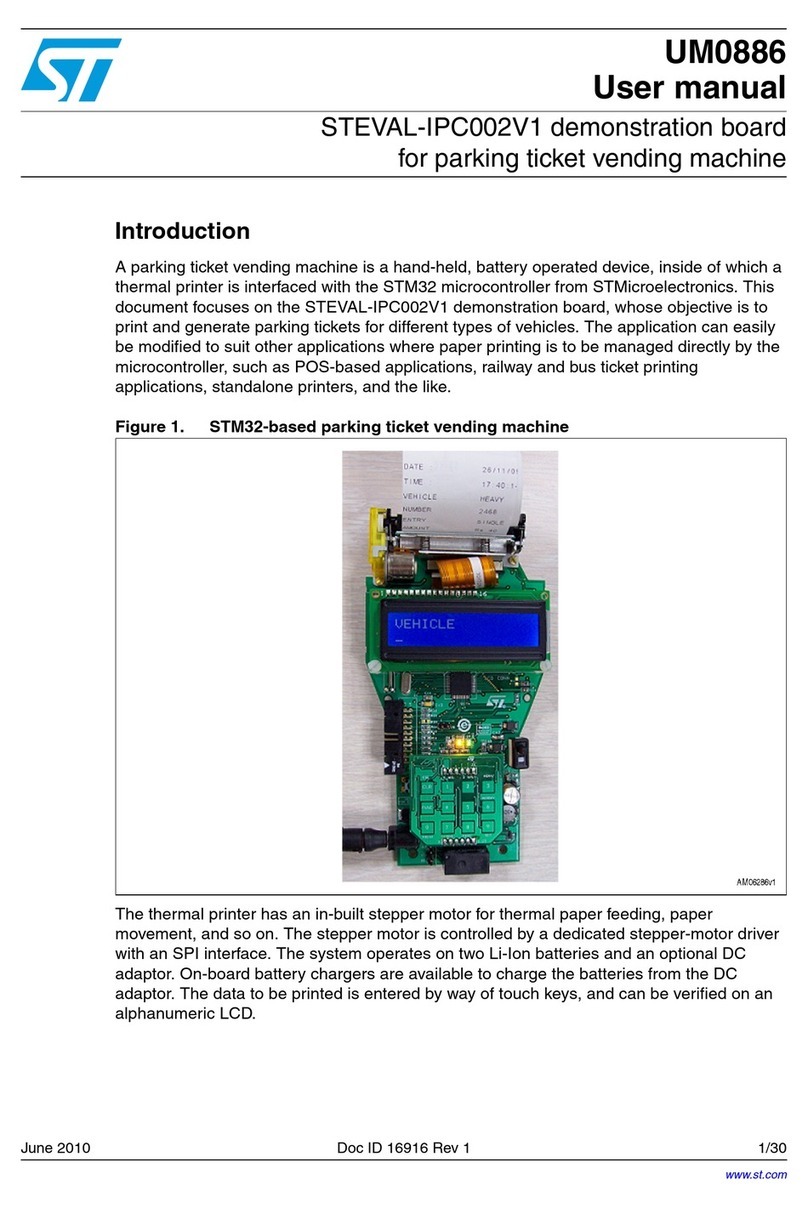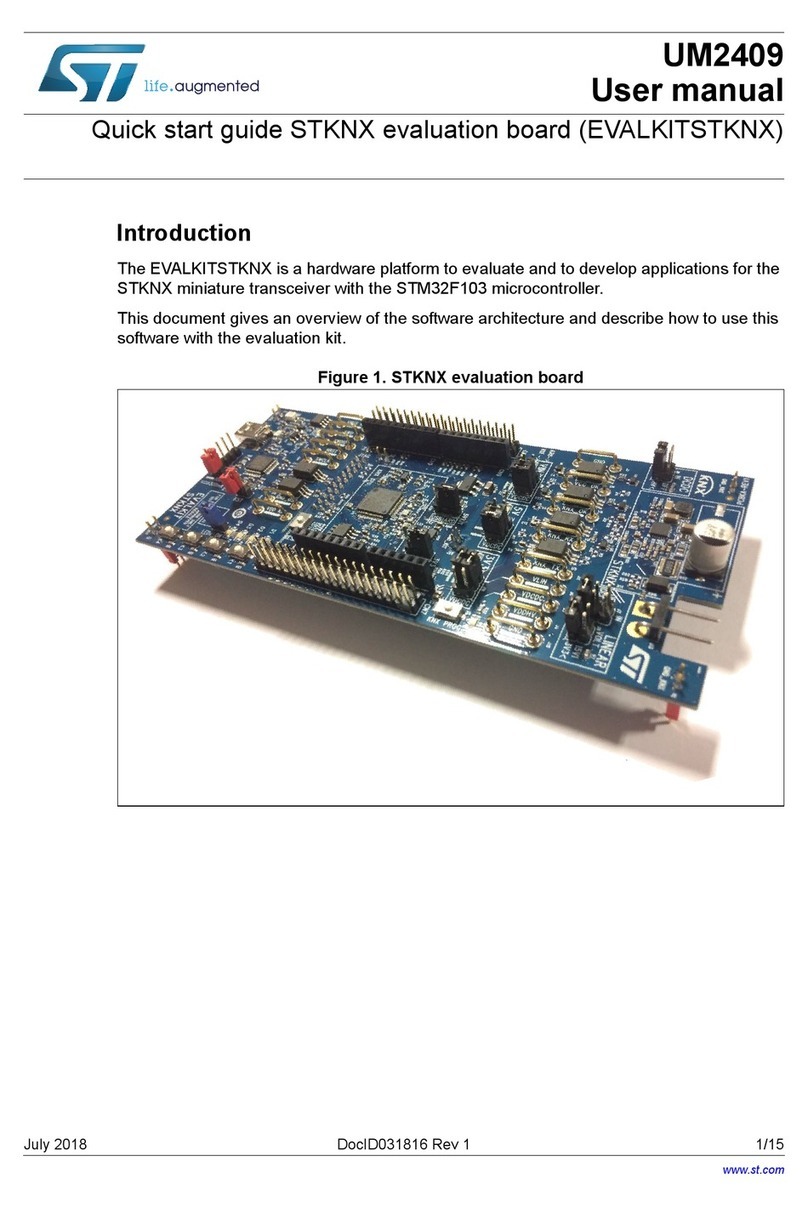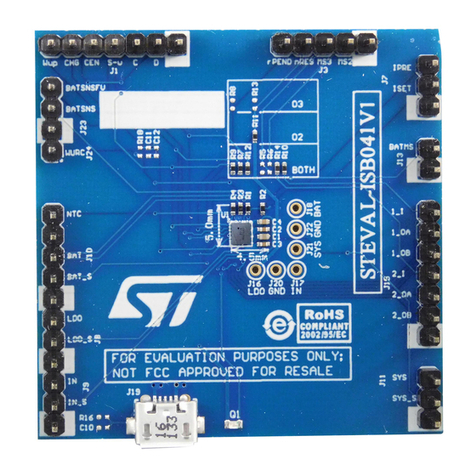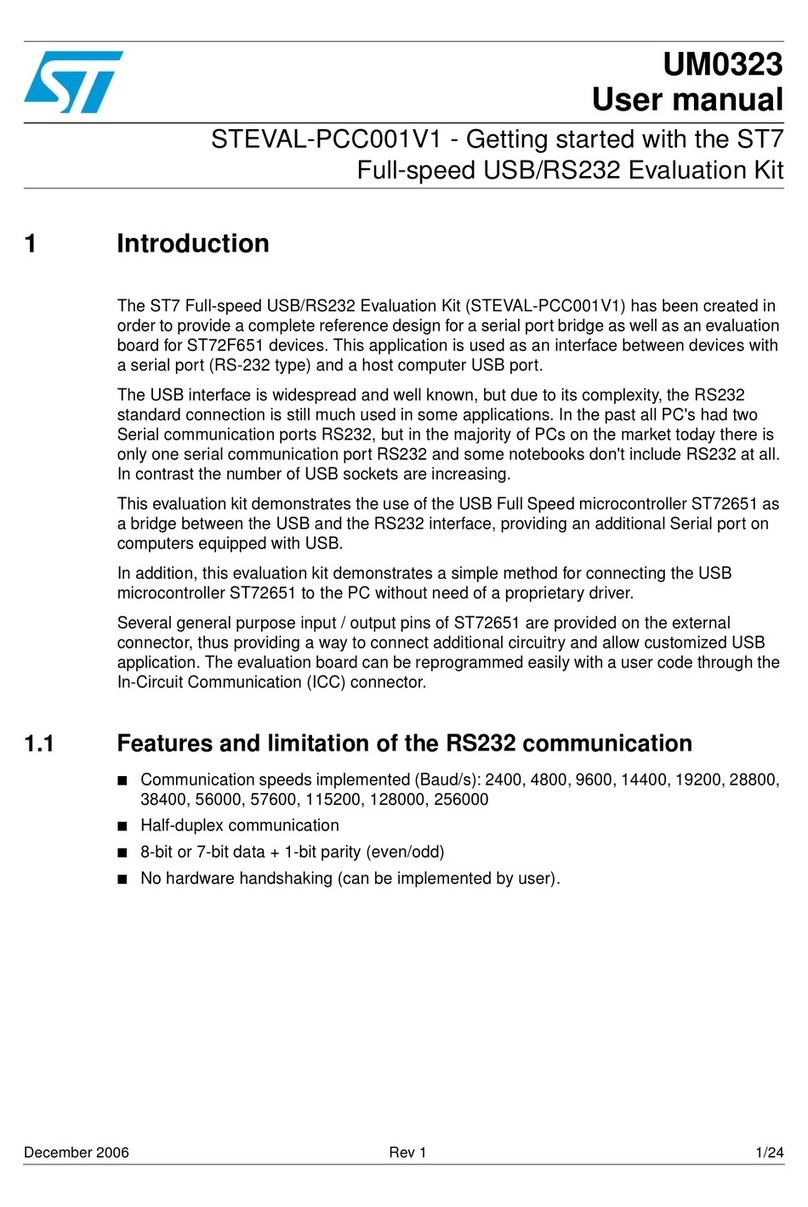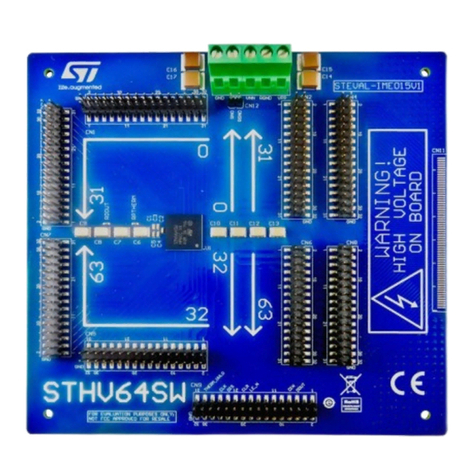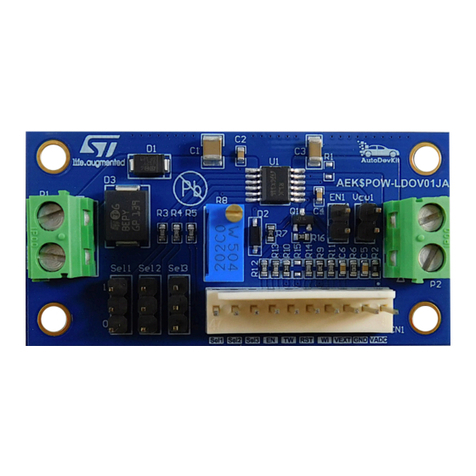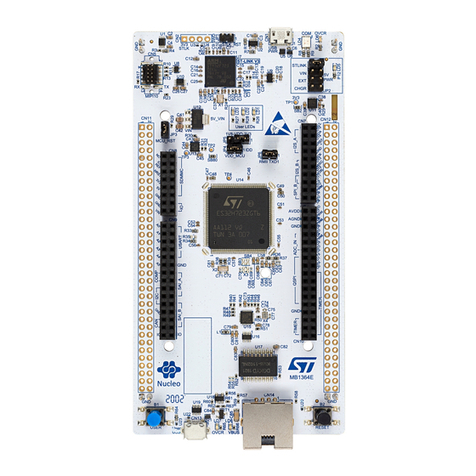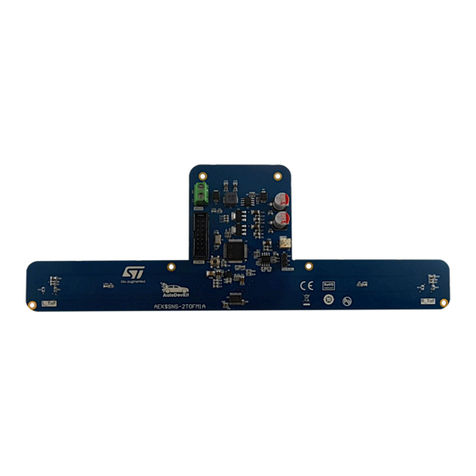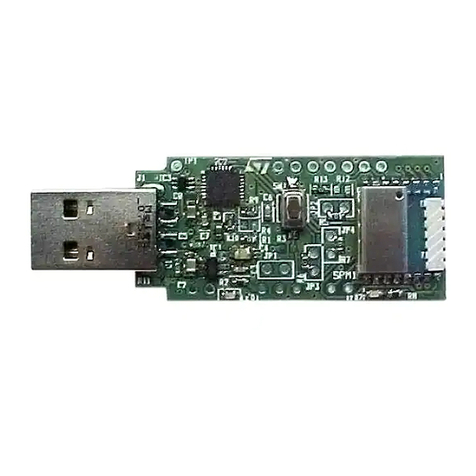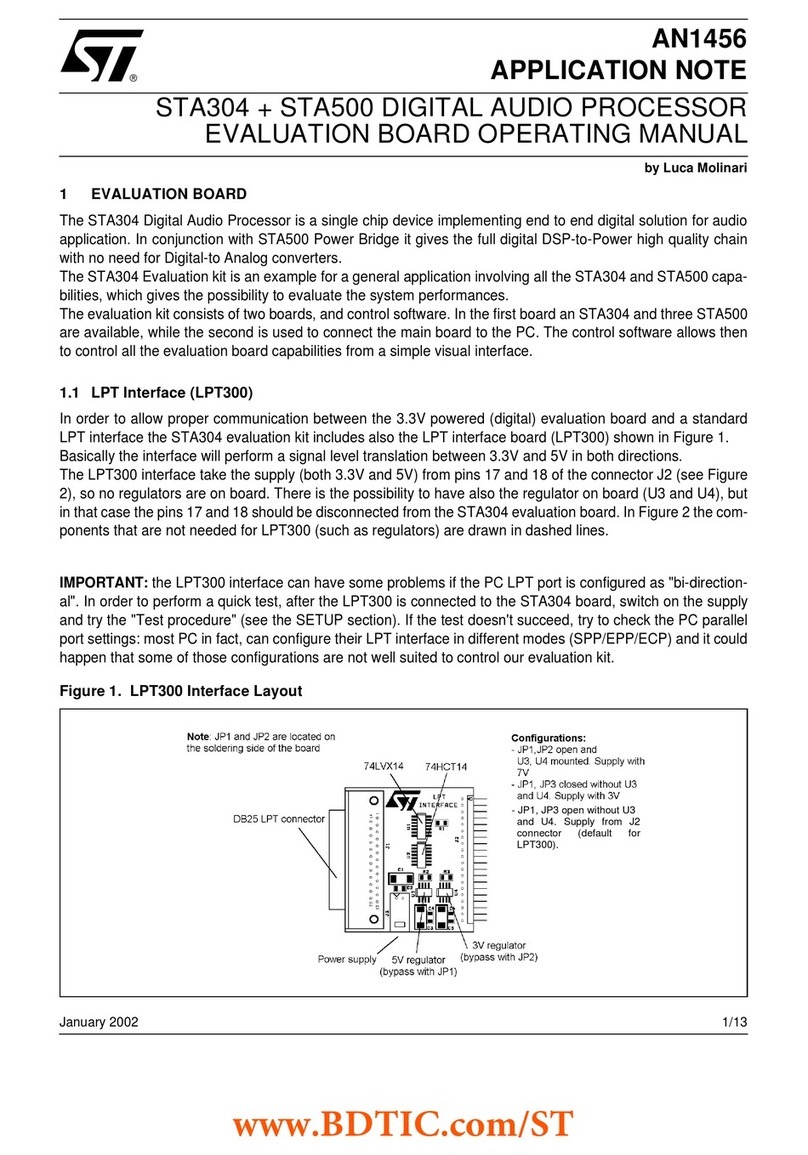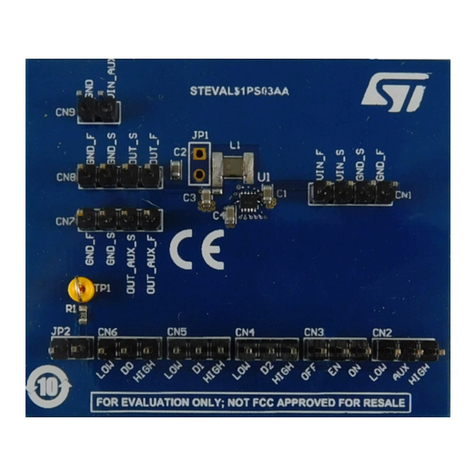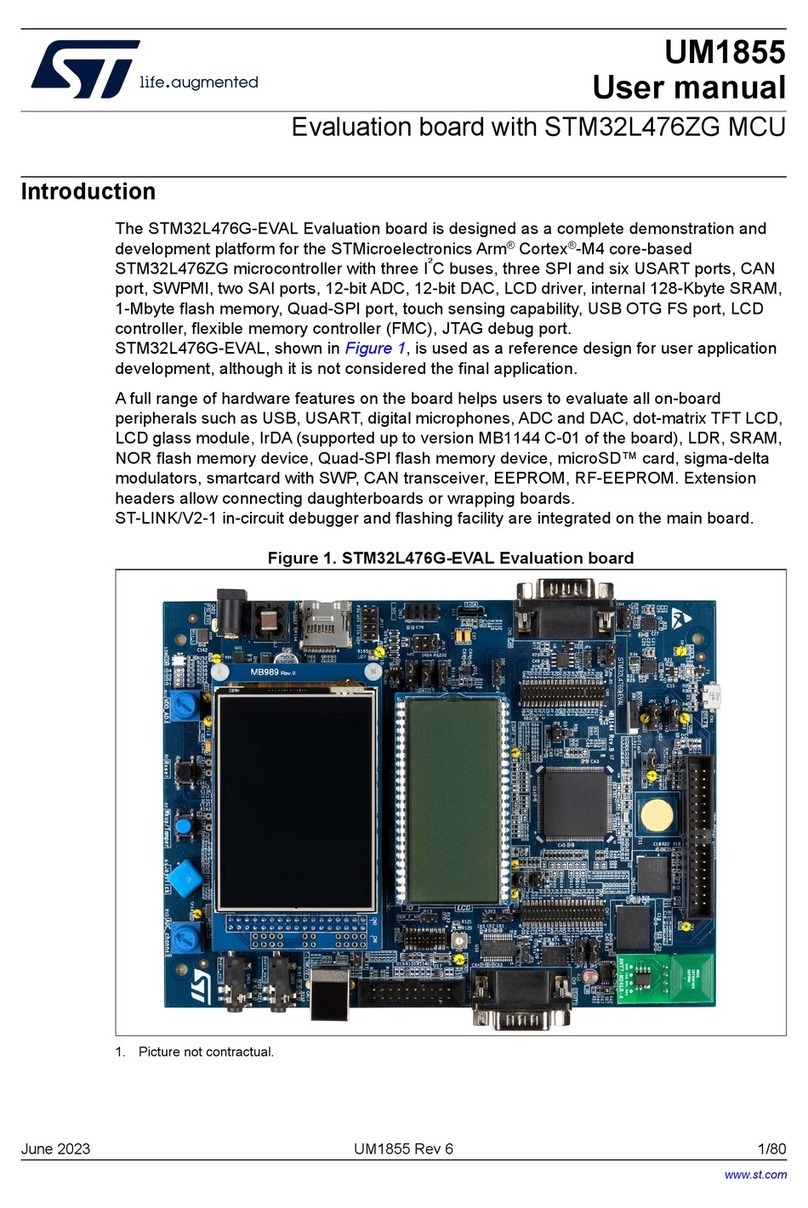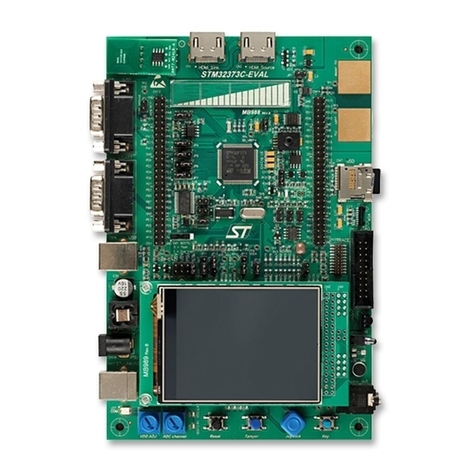
Hardware layout and configuration UM0488
10/48
2.8 RS232 connectors
Two D-type 9-pin connectors CN12 (USART1) and CN8 (USART2) are available on the
STM3210E-EVAL evaluation board.
●USART1 connector is connected to RS232 transceiver U7
●USART2 connector with RTS/CTS handshake signal support is connected to RS-232
transceiver U5. The USART2_CTS is multiplexed with motor control, it can be enabled
by setting the jumper JP4. Refer to Section 2.9: Motor control for details.
2.9 Motor control
The STM3210E-EVAL evaluation board supports three-phase brushless motor control via a
34-pin connector CN1, which provides all required control and feedback signals to and from
the motor power driving board. Available signals on this connector include emergency stop,
motor speed, three-phase motor current, bus voltage, heatsink temperature coming from the
motor driving board and 6 channels of PWM control signals going to the motor driving
circuit.
JP 20 allows to choose between two synchronization methods for power factor correction
(PFC).
The I/O pins used on the motor control connector CN1 are multiplexed with some
peripherals on the board; either the motor control connector or multiplexed peripherals can
be enabled by setting the jumpers JP3, JP4, JP11, JP15 and JP16 as described in Table 6.
Table 6. Motor control related jumpers
Jumper Description Multiplexed
peripherals
JP20 JP20 allows to have a PFC synchronization signal redirected to the timer 3 input capture 1
pin, and additionally to the timer 3 external trigger input. JTAG debugging is disabled when
JP20 is fitted. Default setting: not fitted
JP2 JP2 should be kept on open when encoder signal is input from pin 31 of CN1 while it
should be kept on close when analog signal is from pin 31 of CN1 for special motor.
Default setting: not fitted
JP4
MC_EnA is enabled when JP4 is set as shown to the right
(default setting):
USART2_CTS is enabled when JP4 is set as show to the
right:
USART2
JP3 MC_EmergencySTOP is enabled when JP3 is closed. The pin PA6 is used
as SPI1_MISO when JP3 is open. Default setting: not fitted SPI1
JP11 MC_PFCpwm is enabled when JP11 is open. The pin PB5 will be used as
interrupt input from temperature sensor when JP11 is closed. Temperature
sensor
JP15 MC_UH or I2S_MCK are enabled when JP15 is open. The pin PC6 is used
as Smartcard_CMDVCC when JP15 is closed. I2S and
smartcard
JP16 MC_VH is enabled when JP16 is open. The pin PC7 is used as
Smartcard_OFF when JP16 is closed Smartcard
1 2 3
1 2 3
